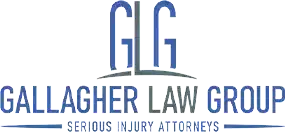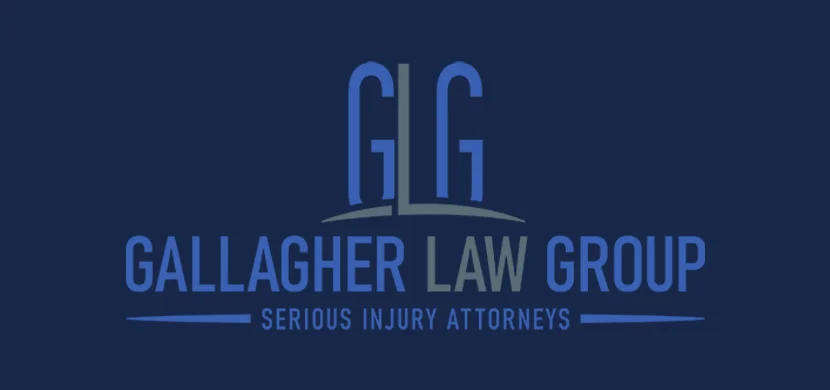Being at fault in a car accident is a stressful experience that can have significant legal, financial, and personal consequences. In Arizona, where over 120,000 traffic crashes occur annually according to the Arizona Department of Transportation, understanding what happens after you’ve caused an accident is crucial for navigating the aftermath effectively. This comprehensive guide walks you through the process, consequences, and steps to take when you’re responsible for a collision in the Grand Canyon State.
Immediate Responsibilities After Causing an Accident
Legal Requirements to Stop and Render Aid
Arizona law (A.R.S. § 28-661 and § 28-662) requires all drivers involved in accidents to:
- Stop immediately at the scene or as close as possible
- Render reasonable assistance to injured persons
- Exchange information with other involved parties
- Report the accident to law enforcement if it involves injuries, deaths, or significant property damage
Failing to fulfill these obligations—particularly leaving the scene of an accident you caused—can result in serious criminal charges, ranging from misdemeanors to felonies depending on the circumstances.
Information Exchange and Documentation
Even when you believe you’re at fault, you must exchange:
- Your name, address, and contact information
- Vehicle registration information
- Insurance company name and policy number
- Driver’s license information
The Arizona Department of Public Safety recommends documenting the scene through photos and notes, even if you believe you’re at fault. This documentation may later prove valuable if there are disputes about the degree of fault or the extent of damages.
Insurance Implications When You’re at Fault
Arizona’s Fault-Based Insurance System
Arizona operates under a “fault” or “tort” insurance system, meaning the driver responsible for causing an accident is liable for resulting damages. According to the Arizona Department of Insurance and Financial Institutions, this means:
- Your liability insurance will be primarily responsible for covering the other party’s damages
- You’ll likely need to pay your collision coverage deductible to repair your own vehicle
- If damages exceed your policy limits, you may be personally responsible for the difference
Required Insurance Minimums and Their Limitations
Arizona requires all drivers to carry minimum liability insurance of:
- $25,000 bodily injury liability per person
- $50,000 bodily injury liability per accident
- $15,000 property damage liability
As the Phoenix Car Accident Attorneys at GLG point out, these minimums are often insufficient in serious accidents. Recent examples illustrate this reality: In March 2025, AZ Family reported a case where an at-fault driver with minimum coverage was held personally responsible for over $100,000 in damages beyond their policy limits after causing a multi-vehicle collision on Loop 101 in Scottsdale.
Premium Increases and Potential Policy Cancellation
Being found at fault typically results in:
- Insurance premium increases of 30-50% on average in Arizona
- Potential loss of good driver discounts
- Possible policy non-renewal, especially if you have previous accidents
- Required SR-22 filing in some cases
A February 2025 analysis by the Arizona Republic found that Phoenix drivers with one at-fault accident faced average premium increases of 42%, amounting to roughly $800-$1,200 in additional annual costs over three years.
Comparative Negligence in Arizona
Understanding Arizona’s Pure Comparative Negligence System
Arizona follows a “pure comparative negligence” system under A.R.S. § 12-2505, which means:
- Multiple parties can share fault in an accident
- Each party is responsible for their percentage of fault
- Your financial responsibility is proportional to your degree of fault
- You can still recover damages from other parties, reduced by your percentage of fault
For example, if you’re determined to be 70% at fault in an accident with total damages of $10,000, you would be responsible for $7,000, while potentially able to claim $3,000 from the other party.
How Fault Percentages Are Determined
Fault determination typically involves:
- Police reports and citations
- Witness statements
- Physical evidence from the accident scene
- Traffic laws that were violated
- Expert analysis in complex cases
The GLG Arizona Liability Guide explains that even in seemingly clear-cut cases, thorough investigation may reveal shared responsibility, potentially reducing your financial burden.
Legal Consequences of At-Fault Accidents
Traffic Citations and Their Impact
Common citations issued in at-fault accidents include:
- Failure to yield right of way
- Following too closely
- Speeding
- Improper lane change
- Distracted driving violations
- Failure to control vehicle
These citations typically result in:
- Fines ranging from $100 to $500+
- Points on your Arizona driver’s license
- Potential requirement for traffic school
- Established presumption of fault for insurance purposes
Criminal Charges in Serious Cases
More serious circumstances can result in criminal charges:
- Driving under the influence (DUI)
- Reckless driving
- Criminal speeding (exceeding 85 mph or 20+ mph over the limit)
- Vehicular assault or homicide
According to ABC15 Arizona, a Phoenix driver who caused a fatal accident while texting on Camelback Road in April 2025 faced criminal charges for reckless driving, highlighting Arizona’s increasingly strict approach to dangerous driving behaviors.
License Consequences
The Arizona Motor Vehicle Division may impose:
- License suspension for serious violations or accumulation of points
- Mandatory driver improvement courses
- Restricted driving privileges
- Increased scrutiny on future violations
Financial Repercussions Beyond Insurance
Personal Asset Exposure
When your insurance coverage is insufficient:
- Your personal assets may be at risk
- The other party can file a lawsuit against you personally
- Future wages could potentially be garnished
- Bankruptcy may be considered in extreme cases
Long-Term Financial Impacts
The financial consequences often extend beyond immediate costs:
- Higher insurance premiums for 3-5 years
- Difficulty obtaining affordable insurance
- Potential credit score impacts if bills go unpaid
- Employment consequences in jobs requiring driving
Steps to Take When You’ve Caused an Accident
Immediate Actions at the Scene
- Ensure safety first
- Check for injuries and call 911 if needed
- Move vehicles to safe locations if possible
- Turn on hazard lights and set up warning triangles if available
- Report the accident appropriately
- Contact police for accidents with injuries or significant damage
- Be truthful but stick to facts when speaking with officers
- Avoid explicit admissions of fault at the scene
- Document thoroughly
- Take photos of all vehicles and the overall scene
- Note weather and road conditions
- Collect witness contact information
- Make notes about what happened while memory is fresh
Communication with Insurance Companies
The GLG Personal Injury Center recommends careful communication with insurers:
- Notify your insurance company promptly
- Report the basic facts of the accident
- Provide requested documentation
- Be honest but concise in your statements
- Understand the claims process
- Your insurer will assign an adjuster to investigate
- They will likely contact the other party
- They will determine settlement offers based on their investigation
- They will defend you if the other party files a lawsuit
- Be cautious with recorded statements
- Consider the implications before providing recorded statements
- Stick to factual information
- Avoid speculation about causes or fault
- Consider consulting with an attorney before extensive statements
Mitigating the Consequences
Traffic School and Defensive Driving Courses
Arizona offers options to reduce the impact of citations:
- Defensive driving courses can dismiss one eligible traffic ticket every 12 months
- Completing approved courses can prevent points from being added to your license
- Insurance companies may offer discounts for voluntary completion of safety courses
The Arizona Supreme Court’s Defensive Driving Program provides information about eligible violations and approved course providers.
Negotiating with Insurance Companies
Even when at fault, you may have options:
- Request a review if you believe the fault determination is incorrect or exaggerated
- Negotiate payment plans for deductibles if needed
- Discuss potential premium impacts and discount retention
Legal Representation Considerations
While many assume lawyers only represent accident victims, attorneys can also assist at-fault drivers by:
- Ensuring fair fault allocation in shared responsibility scenarios
- Protecting against excessive damage claims
- Negotiating with other parties’ attorneys
- Defending against criminal charges in serious cases
Learning from Real Arizona Cases
Recent incidents reported in Arizona media provide insights into the consequences of at-fault accidents:
Case 1: Distracted Driving on Scottsdale Road
The Arizona Republic reported in March 2025 about a driver who caused a three-vehicle collision while checking a navigation app. Initially believing they were 100% at fault, investigation revealed the other driver was speeding, resulting in a 70/30 fault split. This significantly reduced the at-fault driver’s financial responsibility and subsequent insurance premium increase.
Case 2: Failed Left Turn in Downtown Phoenix
AZ Family covered a January 2025 case where a driver made an improper left turn at a busy downtown Phoenix intersection, striking a vehicle with right-of-way. Though clearly at fault, the driver’s quick action in completing Arizona’s defensive driving program prevented license points and reduced the insurance impact, while their prompt reporting to insurance facilitated faster claims processing for all parties.
Case 3: Weather-Related Highway Collision
ABC15 Arizona reported a multi-vehicle pileup during a monsoon storm on I-10 in July 2024. Several drivers received citations, but the investigation ultimately distributed fault among multiple drivers based on their speed relative to conditions. This case highlighted how Arizona’s pure comparative negligence system works in complex scenarios with environmental factors.
Long-Term Considerations
Rebuilding Your Driving Record
After an at-fault accident:
- Maintain a clean driving record moving forward
- Consider voluntary defensive driving courses
- Ask your insurance company about accident forgiveness programs
- Shop for new insurance quotes after 3-5 years
Addressing Psychological Impacts
Causing an accident can have emotional consequences:
- Anxiety about driving
- Guilt, especially if others were injured
- Stress related to financial consequences
- Potential post-traumatic stress
Many Arizona health insurance plans cover counseling services that can help process these emotions.
Conclusion
Being at fault in an Arizona car accident carries significant consequences, but understanding the process helps you navigate the aftermath more effectively. By fulfilling your legal obligations, communicating appropriately with insurance companies, and taking advantage of available mitigating options, you can work toward resolving the situation and moving forward.
Remember that even when you believe you’re at fault, the legal and insurance processes may determine shared responsibility. Focus on fulfilling your obligations, documenting thoroughly, and making informed decisions about how to proceed.
The days and weeks following an at-fault accident are challenging, but with the right approach, you can manage the consequences responsibly while protecting your long-term interests.
References
- Arizona Revised Statutes § 28-661 and § 28-662. Accident Reporting Requirements.
- Arizona Department of Transportation. (2024). Arizona Crash Facts.
- Arizona Department of Public Safety. (2025). Post-Accident Procedures.
- Arizona Department of Insurance and Financial Institutions. (2025). Auto Insurance Guide.
- Arizona Supreme Court. (2025). Defensive Driving Program.
- Arizona Republic. (March 2025). Comparative negligence reduces driver’s liability in Scottsdale collision.
- AZ Family. (January 2025). Downtown Phoenix left-turn accident highlights mitigation options.
- ABC15 Arizona. (July 2024). Monsoon pileup on I-10 demonstrates shared fault determination.



